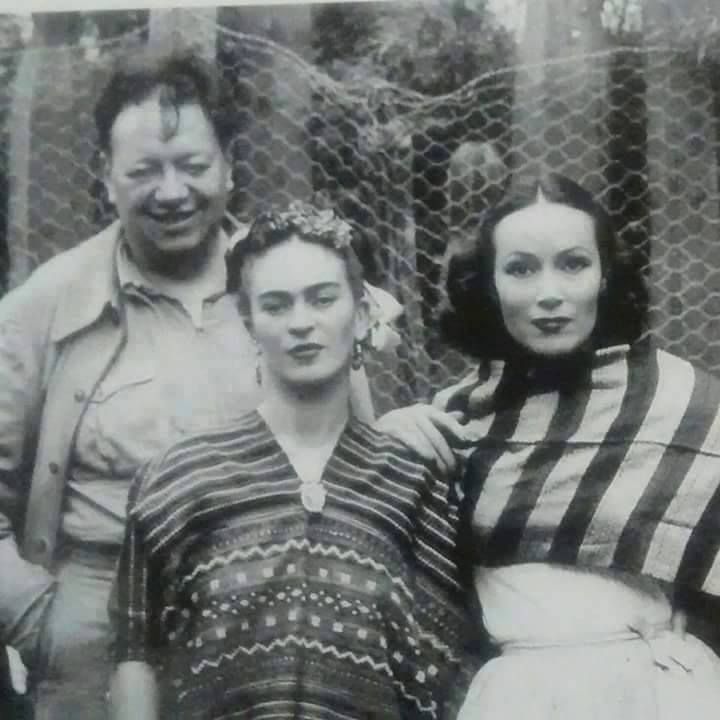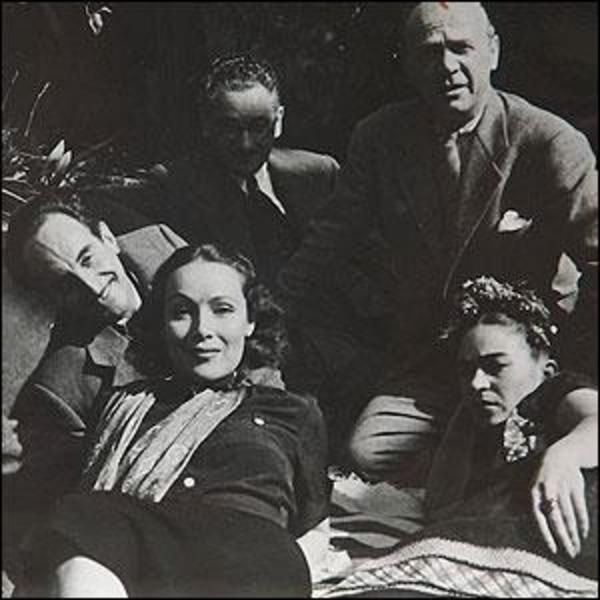Exploring The Lives Of Frida Kahlo And Dolores Del Río: Icons Of Mexican Culture
Frida Kahlo and Dolores del Río are two monumental figures in Mexican culture, each representing different facets of art and cinema. Both women not only contributed significantly to their respective fields but also embodied the spirit and struggles of their time. Frida Kahlo, known for her poignant self-portraits and vibrant representations of identity, and Dolores del Río, celebrated for her stunning performances in classic films, have left an indelible mark on the world. In this article, we will delve into their lives, their art, and their influence on Mexican culture and beyond.
Frida Kahlo’s unique style and personal narrative have rendered her an icon of feminism and self-expression, while Dolores del Río's grace and elegance made her a pioneering actress in Hollywood's Golden Age. Together, they represent the richness of Mexican heritage and the resilience of women in the arts. As we explore their biographies and contributions, you will discover how their legacies continue to inspire future generations.
This comprehensive article seeks to provide an in-depth look at Frida Kahlo and Dolores del Río, highlighting their achievements, struggles, and lasting impact on both national and international stages. Through a detailed examination of their lives, we aim to celebrate their contributions to art and cinema, while also understanding the cultural contexts that shaped their journeys.
Table of Contents
- Frida Kahlo: A Brief Biography
- Frida Kahlo's Artistry
- The Legacy of Frida Kahlo
- Dolores del Río: A Brief Biography
- Dolores del Río's Career Highlights
- The Legacy of Dolores del Río
- Cultural Impacts of Kahlo and del Río
- Conclusion
Frida Kahlo: A Brief Biography
Frida Kahlo, born on July 6, 1907, in Coyoacán, Mexico City, is renowned for her deeply personal and emotive paintings. Her tumultuous life experiences, including a severe bus accident at the age of 18, significantly influenced her art. Kahlo's work often reflects her physical and emotional pain, her Mexican identity, and her tumultuous relationship with fellow artist Diego Rivera.
| Attribute | Details |
|---|---|
| Full Name | Frida Kahlo |
| Date of Birth | July 6, 1907 |
| Date of Death | July 13, 1954 |
| Nationality | Mexican |
| Occupation | Painter |
Frida Kahlo's Life and Early Years
Growing up in a politically engaged family, Kahlo was exposed to revolutionary ideas from an early age. Her father was a German immigrant photographer, and her mother was a Mexican of indigenous descent. This blend of cultures profoundly influenced her identity and later her artwork.
Frida Kahlo's Artistry
Kahlo's paintings often depict themes of identity, postcolonialism, gender, class, and race in Mexican society. She utilized vibrant colors and symbolic imagery, creating a style that was distinctly her own. Her most famous works, such as "The Two Fridas" and "Self-Portrait with Thorn Necklace and Hummingbird," explore complex emotions and identity struggles.
Influence of Personal Experiences in Her Art
Kahlo's artwork is deeply autobiographical, often portraying her physical pain and emotional turmoil. The symbolism in her paintings frequently draws from Mexican popular culture, blending folk art with elements of surrealism. This unique approach has garnered her a significant following, especially among feminists and artists.
The Legacy of Frida Kahlo
Frida Kahlo's legacy extends beyond her paintings; she has become a symbol of resilience and empowerment for women worldwide. Her life story, filled with struggles and triumphs, continues to inspire artists and activists alike. Numerous exhibitions and films, such as the 2002 movie "Frida," have further cemented her status as a cultural icon.
Dolores del Río: A Brief Biography
Dolores del Río, born on August 3, 1904, in Durango, Mexico, was one of the first major Mexican actresses to gain fame in Hollywood. Del Río's career began in the silent film era, and she quickly became known for her beauty and talent, eventually transitioning to talkies and achieving international acclaim.
| Attribute | Details |
|---|---|
| Full Name | Dolores del Río |
| Date of Birth | August 3, 1904 |
| Date of Death | April 11, 1983 |
| Nationality | Mexican |
| Occupation | Actress |
The Early Career of Dolores del Río
Del Río began her career in the 1920s, appearing in several successful silent films. Her breakout role came in the 1926 film "What Price Glory?" which established her as a leading actress. She was known for her ability to portray complex characters, often reflecting the struggles of women in society.
Dolores del Río's Career Highlights
Throughout her career, Dolores del Río starred in numerous films, including "Flying Down to Rio" and "The Bad and the Beautiful." Her performances were characterized by elegance and depth, earning her critical acclaim and a dedicated fan base. As a pioneer for Latina actresses in Hollywood, she paved the way for future generations.
Transition to Mexican Cinema
In the 1940s, Del Río returned to Mexico, where she became a prominent figure in the Golden Age of Mexican cinema. Her films during this period showcased her versatility as an actress and contributed to the cultural renaissance in Mexico. She continued to act in films until the late 1970s.
The Legacy of Dolores del Río
Dolores del Río's legacy is marked by her contributions to both American and Mexican cinema. She is remembered as a trailblazer for Mexican actresses and has been honored with numerous awards throughout her career. Her impact on film continues to be studied and celebrated, inspiring filmmakers and actors alike.
Cultural Impacts of Kahlo and del Río
Both Frida Kahlo and Dolores del Río significantly impacted Mexican culture and identity. Kahlo's exploration of personal and national identity resonated with many, making her an enduring symbol of feminism and self-exploration. Meanwhile, del Río's success in Hollywood challenged stereotypes and opened doors for future Latina actresses.
Their combined influence has helped to elevate Mexican art and cinema on the global stage, fostering a greater appreciation for the richness of Mexican culture. As cultural icons, they represent the strength and creativity of women, inspiring countless individuals to embrace their identities and pursue their passions.
Conclusion
In conclusion, Frida Kahlo and Dolores del Río are two remarkable figures whose contributions to art and cinema have shaped the cultural landscape of Mexico and beyond. Through their resilience, creativity, and passion, they have left legacies that continue to inspire and empower future generations. We encourage readers to engage with their works, explore their stories, and appreciate the depth of their contributions to the world of art and film.
If you found this article insightful, please leave a comment below or share it with your friends. Explore more articles on our site to learn about other influential figures in art and culture.
Thank you for reading, and we look forward to welcoming you back to our site for more enriching content!
Joe Budden's Current Girlfriend: A Deep Dive Into His Love Life
Exploring The Life And Career Of Sex Rai: A Comprehensive Biography
Exploring The Life And Career Of Chaney Kley


